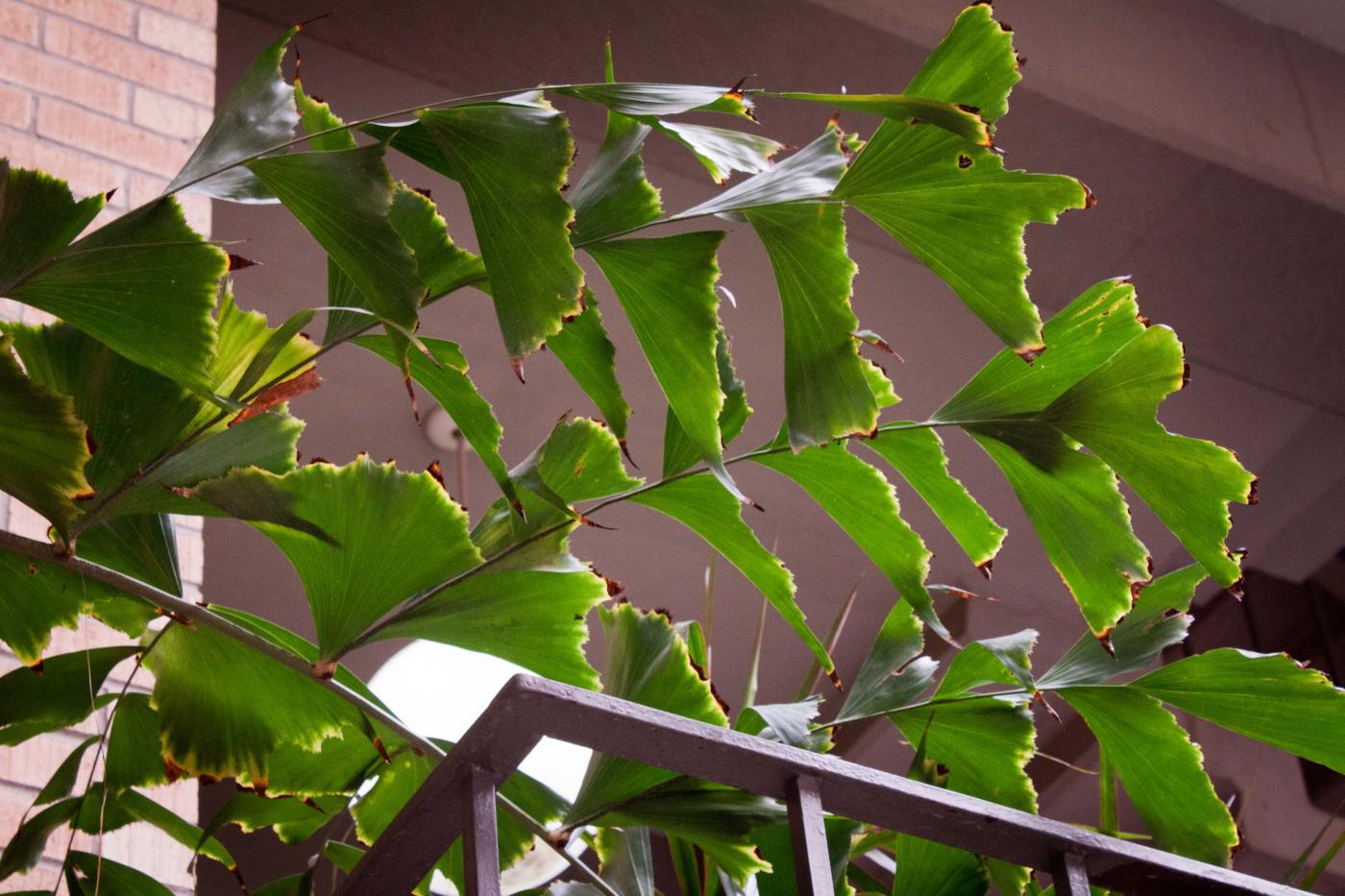Caryota
|
Family: Arecaceae |
Stems solitary or clustered, slender to massive, smooth, with conspicuous nodal rings. Leaves: blade 2-pinnate (1-pinnate in juvenile plants); plication induplicate; segments cuneate, in 1 plane; apices jagged and irregular; basal segments not modified into spines. Inflorescences initiated basipetally, first one appearing terminal, successive one borne axillary among leaves, and later ones below leaves, pendulous, paniculate, with 1 order of branching [spicate]; prophyll small; peduncular bracts numerous, tubular. Flowers unisexual, sessile, borne in triads of 1 pistillate flower flanked by 2 staminate flowers. Staminate flowers: sepals 3, imbricate, free; petals 3, connate basally, valvate; stamens numerous [6], free; pistillode absent. Pistillate flowers: sepals 3, imbricate, free; petals 3, connate for nearly 1/2 length, valvate; staminodial lobes present or absent; pistils 1, 3-loculate; ovules 1 per locule; styles indistinct; stigmas 3-lobed. Fruits berries, globular; exocarp purple, smooth; mesocarp fleshy, containing irritating raphides; endocarp absent. Seeds globular; endosperm ruminate [homogeneous]; embryo lateral; eophyll 2-cleft, segments fan-shaped. n = 17. Caryota, readily distinguished by its 2-pinnate leaves, is native to India, southeastern Asia, Malesia, the Philippines, the Solomon Islands, Vanuatu, and Australia. Two species of Caryota are commonly cultivated in southern Florida: C. urens and C. mitis. Both species have naturalized in Dade County, Florida.
|

